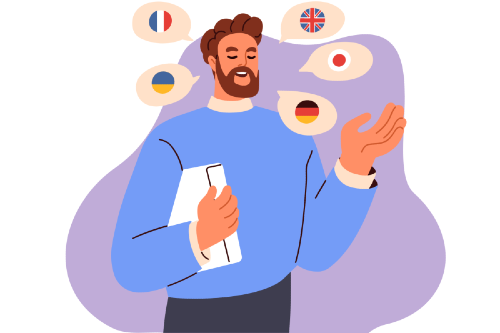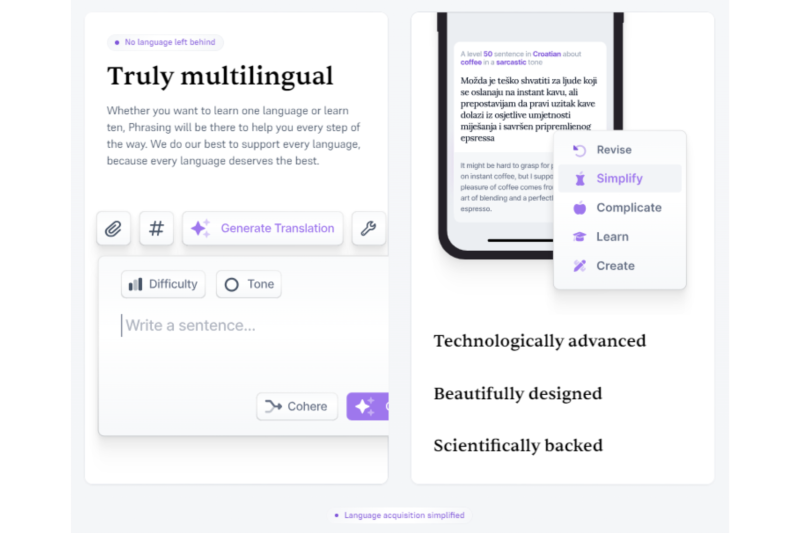Natural Language Acquisition: How Polyglots Learn Languages
Polyglots learn languages through a lifestyle that embraces curiosity, perseverance, and adaptability.

What is a Polyglot?
A polyglot is an individual who has mastered the art of speaking multiple languages. This mastery is not just about memorizing vocabulary or grammar rules; it's about immersing oneself in the culture and context of different languages. Polyglots are language enthusiasts who embrace the complexity and beauty of learning new ways to communicate.

While learning a new language can be daunting for many, polyglots seem to navigate this challenge with ease.
But what is their secret?...
How do they acquire languages naturally?...
The Essence of Natural Language Acquisition
Natural language acquisition is more than just learning to speak a language; it's about thinking and feeling in that language.
Natural language acquisition is a process akin to how we naturally acquire our first language as children. It's an organic, immersive learning experience where understanding grows through exposure and interaction. This approach contrasts with traditional language learning methods that often rely on rote memorization of rules and vocabulary.
Is Immersion Really Effective?
From the conversations with polyglots and language experts, one thing becomes abundantly clear: immersion is a critical component of natural language acquisition. As pointed out by most polyglots including myself- is being surrounded by the language in everyday contexts forces the brain to adapt and understand the new sounds and structures.
For polyglots, language learning isn't just a hobby; it's a way of life. If you've hit a wall with language apps like Duolingo or traditional learning methods, it's time to take a leaf out of the polyglot playbook.
As someone who loves learning languages, I often look into many sources to get more additional insights on the best ways to learn. One of the many things I came across is the the video from the YouTube channel "Days and Words" with dedicated language enthusiasts, Lamont where he discussed on how he learned to acquire multiple languages. In which, I found relevant to my own experiences as well.
Days and Words
Keep on reading for more insights that would definitely aid your learning.
Diverse Strategies of Polyglots
What Language Should I Learn?
"The first thing that I think I did right with Swedish that I did wrong with everything else was that I picked a language that I was attracted to." - Lamont
Lamont emphasizes the importance of choosing a language that genuinely intrigues or resonates with the learner, rather than one they feel obliged to learn.
Selecting the right language is about more than practicality; it's about passion. When you're genuinely fascinated by a language, you're more likely to stay committed and enjoy the learning journey. This intrinsic motivation is a driving force that keeps polyglots immersed in the process, despite challenges and setbacks.
Where Can I Find Language Learning Resources?
Treat literally anything that was in your target language at all...as material was there to teach you the language...everything that is in that language has the capacity to teach you something about the language.
This insight stresses the potential of various materials to aid in language learning, regardless of their conventional educational value.

From instruction manuals to watching anime, Netflix series, listening to lots of music to get the phonetics down, storytime, and non-fiction content like news or history buffs, every piece of content in your target language is a potential learning resource. This mindset encourages learners to seek out various forms of input, broadening the scope of their exposure and fast-tracking their comprehension skills.
Grammar as a Secondary Tool:
While many language learners are also grammar enthusiasts, an interest in grammar does not directly correlate with language acquisition success.
Learning in Context-Understanding language in its cultural and situational context often leads to a deeper and more intuitive grasp of grammar, as rules are seen in action rather than as abstract concepts.
Creative Use of Flashcards:
Some learners create flashcards from snippets of YouTube videos, blending visual and auditory learning.

To further enrich the learning experience, they often add personal notes or mnemonic devices on the flip side to enhance retention.
Integration with spaced repetition software like Phrasing.app can optimize this approach, ensuring that the most challenging content is reviewed at strategic intervals.
Furthermore, by categorizing these multimedia flashcards by topic or subject, learners can systematically tackle complex material in a more organized and engaging manner.
When Do I Know I've Learned Enough?
Adopt a "No amount is too much attitude". With Language learning if you've got time, you can learn indefinitely.

Never treat it like your done!
Rather than settling for fluency or a particular proficiency level, strive for ongoing growth and learning.
Unlike other pursuits that require balance, language learning benefits from consistent, extensive exposure and practice.
Recognizing that language proficiency is not a final destination but an ongoing journey can help maintain the drive to improve continuously.
Polyglots don't hesitate to inundate themselves with the language, creating an environment where learning happens organically.
Understanding Depth over Breadth:
You have to understand a lot of one thing before you can understand a lot of everything.
Deeply understanding a single resource can be more beneficial than shallowly covering many, as it can lead to a better grasp of the language as a whole.
Beyond Traditional Tools
While language courses, textbooks, and apps like Babbel or Duolingo have their place, they are not the sole path to language mastery. The gold standard for polyglots is exposure to natural, authentic content in the target language.
Why Phrasing.app Is Not Your Traditional Language Learning Tool?

Phrasing.app distinguishes itself in the realm of language learning through its immersive approach, Contextual Learning, which embodies our natural way of acquiring language by integrating words and phrases into real-life scenarios.
Enhanced by the scientifically-backed Spaced Repetition system, the app's algorithm is designed to optimize memory retention by prompting users to review material at the precise moment it starts to fade from memory, thus methodically cementing linguistic knowledge.
The application also boasts advanced Speech Recognition technology that offers immediate pronunciation and fluency corrections, mirroring the personalized feedback of a language tutor and proving to be a game changer for those learning new accents.
From my personal experience, the methodologies adopted by Phrasing.app reflect the same strategies I've used and honed over years of language study. It's not just about learning a language; it's about living it, and Phrasing.app offers a virtual immersion that mirrors the natural language acquisition process.
Bottomline
These concepts, distilled from a polyglot's personal experience, highlight a balanced strategy for language acquisition encompassing motivation, resource utilization, dedication, and an unending commitment to learning.
Polyglots learn languages through a lifestyle that embraces curiosity, perseverance, and adaptability. By pursuing a language that ignites passion, utilizing all forms of content as a learning tool, immersing oneself without reservation, committing to continuous advancement, and focusing on a thorough understanding of materials, they achieve what many strive for—true language proficiency.
